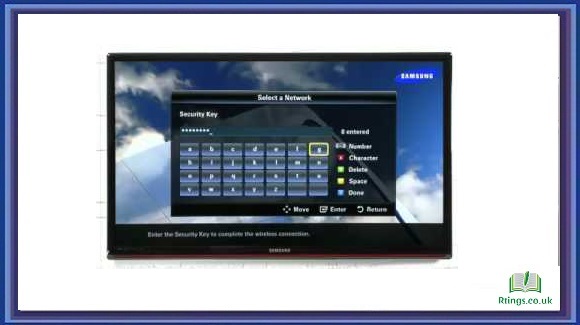In the audio world, the term “5.1 channel” is frequently used to describe a specific audio configuration that has become synonymous with home theater and immersive sound experiences. Whether shopping for a new good system, setting up a home theater, or simply curious about audio technology, understanding what 5.1 channel audio means is essential. This comprehensive guide will explore the meaning of 5.1 channel audio, its components, how it works, and its impact on your overall listening experience.
What Does “5.1 Channel” Mean?
At its core, “5.1 channel” refers to a multi-channel audio system comprising six discrete audio channels or speakers. Each track plays a distinct role in delivering a surround sound experience. The “5” in 5.1 represents the five main audio channels, while the “1” stands for the low-frequency effects channel, typically handled by a subwoofer. Together, these components work harmoniously to create a three-dimensional, immersive sound field for a more engaging audio experience.
The Components of a 5.1 Channel Audio System
To fully grasp the concept of 5.1 channel audio, let’s break down the six essential components that make such a system:
Front Left and Front Right (2.0 Channels)
The front left and front right speakers are the foundation of the audio system. They reproduce most audio, including dialogue, music, and ambient sounds.
Placed on either side of the TV or screen, these speakers create a stereo effect, allowing sounds to move between the left and right channels, enhancing the sense of directionality.
Center Channel (1.0 Channel)
The center channel reproduces dialogue and other central audio elements in a movie or TV show. It ensures that speech remains clear and distinct, even amid complex soundscapes.
Positioned above or below the TV, the center channel speaker anchors the dialogue to the screen, making it appear that the characters’ voices are coming directly from the actors.
Rear Left and Rear Right (2.0 Channels)
The rear left and rear right speakers, also known as surround speakers or satellite speakers, complete the surround sound experience.
These speakers are typically placed behind or to the sides of the listener, creating a sense of depth and envelopment by reproducing ambient sounds, background music, and directional effects.
Subwoofer (0.1 Channel)
The Subwoofer, often called the “.1” component, handles the low-frequency effects (LFE) channel. It specializes in producing deep bass sounds, such as explosions, rumbling, and the lowest notes in music.
The Subwoofer adds a tactile element to the audio experience, allowing you to feel the impact of intense action scenes and enjoy music with rich, resonant bass.
How 5.1 Channel Audio Works
Now that we’ve identified the components of a 5.1-channel audio system let’s explore how these channels work together to create a surround sound experience:
Dialogue Clarity with the Center Channel
When watching a movie or TV show, the dialogue is channeled through the center speaker. This ensures that conversations and character interactions are crisp and easy to understand.
Placing the center channel speaker near the screen enhances the illusion that the characters’ voices originate from the on-screen action, improving overall immersion.
Stereo Imaging with Front Left and Front Right Channels
The front left and front right speakers handle stereo audio, including music, ambient sounds, and directional effects.
As sound moves between these two channels, it creates a sense of directionality. For example, if a car passes from left to right on the screen, the audio follows suit, enhancing the realism of the viewing experience.
Surround Sound with Rear Left and Rear Right Channels
The rear left and rear right speakers create surround sound effects. They reproduce ambient sounds, background noise, and directional audio cues.
In action-packed scenes, such as a chase sequence, these channels can make you feel like you’re in the middle of the action, with sounds moving seamlessly around you.
Deep Bass Impact with the Subwoofer
The Subwoofer reproduces low-frequency sounds, adding depth and impact to audio effects like explosions, thunder, and deep musical notes.
The Subwoofer’s ability to produce powerful bass creates a visceral experience, allowing you to hear and feel the intensity of specific moments in movies and music.
Benefits of 5.1 Channel Audio
Now that we understand how a 5.1-channel audio system works let’s explore the benefits of such a configuration:
Immersive Sound Experience
One of the primary advantages of 5.1-channel audio is its ability to create an immersive and three-dimensional sound environment. Multiple channels allow sounds to come from various directions, enveloping the listener in audio.
This immersion enhances the viewing and listening experience, making movies, TV shows, and games more engaging and realistic.
Dialogue Clarity
The dedicated center channel ensures that dialogue remains clear and intelligible, even when other audio elements are active. This is especially crucial for understanding movie and TV shows’ plot and character interactions.
Directional Audio Effects
Directional audio effects, such as a passing car, a flying arrow, or footsteps behind you, become more convincing with surround sound. The rear left and rear proper channels create a sense of movement and directionality, enhancing storytelling and immersion.
Deep and Powerful Bass
The Subwoofer’s ability to reproduce deep bass sounds impacts action scenes, music, and special effects. It creates a tactile experience, allowing you to feel the low-frequency vibrations.
Versatility
A 5.1-channel audio system is versatile and suitable for various types of content, from movies and TV shows to music and gaming. It adapts to the audio requirements of different media, providing an enhanced listening experience across the board.
Differences Between 5.1 and Other Audio Configurations
To better understand the significance of 5.1 channel audio, comparing it to other standard audio configurations is helpful. Here are some key differences:
2.0 and 2.1 Channel
2.0 Channel: A 2.0 channel audio system consists of only two speakers, typically front left and front right. It offers basic stereo sound without surround sound capabilities.
2.1 Channel: A 2.1-channel audio system adds a subwoofer to the two front speakers, enhancing bass response. While it improves audio quality over 2.0, it lacks the full surround sound experience of 5.1.
7.1 and 9.1 Channel
7.1 Channel: A 7.1 channel audio system expands on the 5.1 configuration by adding two additional surround channels (rear surround left and rear surround right). This creates an even more immersive sound experience.
9.1 Channel: A 9.1 channel audio system further enhances immersion by adding height channels. This configuration is often associated with advanced audio formats like Dolby Atmos and DTS: X.
Stereo vs. Mono
Stereo audio systems, including 5.1 channels, use two or more audio tracks to create a sense of directionality and depth. In contrast, mono audio systems use a single medium for audio playback, resulting in a more fundamental and less immersive sound experience.
Compatibility and Content
When considering a 5.1-channel audio system, it’s essential to think about Compatibility and the types of content that can take full advantage of it:
Compatibility
To fully enjoy 5.1 channel audio, your playback device (e.g., Blu-ray player, streaming device, gaming console) must support it. Your audio source (e.g., movies, games, music) should have 5.1 channel audio tracks or encoding.
Ensure your AV receiver or soundbar can decode and process 5.1 channel audio signals. Many modern receivers and soundbars support standard audio formats like Dolby Digital and DTS, associated with 5.1-channel audio.
Content Types
Movies and TV Shows: Many films and TV shows are produced with 5.1 channel audio tracks, making them ideal for a surround sound setup. Action films, in particular, benefit from the enhanced audio experience.
Gaming: Video games, especially those designed for consoles, often feature 5.1 channel audio support. This can give gamers a competitive edge by allowing them to hear in-game audio cues accurately.
Music: While most music is produced in stereo, some music formats and genres, such as concert recordings and specific classical compositions, may utilize 5.1-channel audio for a more expansive listening experience.
Setting Up a 5.1 Channel Audio System
If you’re interested in setting up a 5.1-channel audio system, here are the essential steps to get started:
Gather Equipment
You’ll need the following components: front left and right speakers, a center channel speaker, rear left and right surround speakers, a subwoofer, and an AV receiver (or a soundbar with built-in processing capabilities).
Speaker Placement
Position the front left and right speakers on either side of your TV or screen at ear level when seated.
Place the center channel speaker above or below the TV, ensuring it’s aligned with the screen.
Position the rear left and right surround speakers behind or to the sides of your listening area, slightly above ear level.
Set up the Subwoofer in a location that allows even bass distribution throughout the room. Experiment with subwoofer placement to achieve optimal bass response.
AV Receiver Setup
If using an AV receiver, connect each speaker to the corresponding channel on the receiver. Ensure proper polarity and phase alignment.
Connect the Subwoofer to the subwoofer output on the receiver.
Connect your audio and video sources to the receiver using HDMI, optical, or other appropriate cables.
Configure the receiver’s settings to recognize and process 5.1 channel audio. This may involve selecting the appropriate audio mode and running a speaker calibration or setup program, if available.
Calibration and Testing
Run the receiver’s calibration program to optimize audio settings and speaker levels. This ensures that audio is balanced and calibrated for your room’s acoustics.
Test the system with 5.1 channel audio content to confirm that each speaker functions correctly and that audio is distributed as intended.
Content Playback
Play movies, games, or music that support 5.1 channel audio to experience the full benefits of your audio setup.
Future-Proofing with Advanced Audio Formats
As technology evolves, audio formats have also advanced to deliver even more immersive sound experiences. Two prominent formats that expand upon the traditional 5.1 channel audio setup are Dolby Atmos and DTS:X:
Dolby Atmos
Dolby Atmos takes audio immersion to new heights by introducing height channels. Instead of relying solely on ear-level speakers, Dolby Atmos-compatible systems include overhead or height speakers.
This format allows audio to move freely in three dimensions, creating an actual “sound dome” above and around the listener. Raindrops can fall from above, and helicopters can fly overhead.
To enjoy Dolby Atmos, you’ll need an AV receiver or soundbar with Dolby Atmos support and compatible content with Dolby Atmos audio tracks.
DTS:X
DTS:X is another audio format that supports three-dimensional sound. Like Dolby Atmos, it includes height channels to create a more immersive audio experience.
DTS: X-compatible systems provide flexibility in speaker placement, allowing audio to adapt to your specific room setup. It offers a customizable and dynamic soundstage.
To enjoy DTS:X, you’ll need an AV receiver or soundbar with DTS:X support and content that includes DTS:X audio tracks.
Dolby Atmos and DTS:X offer a more advanced and immersive experience than traditional 5.1-channel audio. However, they are compatible with 5.1 channel systems, meaning you can start with a 5.1 setup and later expand to include height channels if desired.
Conclusion
In conclusion, 5.1 channel audio represents a multi-channel audio system comprising six discrete channels: front left, front right, center, rear left, rear right, and a subwoofer. Each channel delivers explicitly a surround sound experience, enhancing immersion and audio clarity in movies, games, and music.
The 5.1 channel configuration has become a standard in home theater setups, providing a versatile and engaging audio experience. It’s compatible with a wide range of content and playback devices, making it a practical choice for enthusiasts and casual users.
As technology advances, audio formats like Dolby Atmos and DTS:X offer even more immersive sound experiences by adding height channels. These formats expand upon the traditional 5.1 channel setup, creating a three-dimensional audio environment that envelops the listener.
Ultimately, whether you opt for a 5.1-channel system or explore advanced audio formats, the goal is to enhance your audio enjoyment and bring a cinematic and immersive listening experience to your home.






